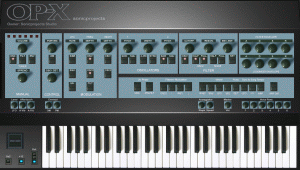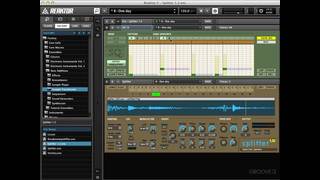
This is especially the case for new Instruments like POLYPLEX, ROUNDS, KONTOUR or MOLEKULAR. Some REAKTOR Ensembles require more performance than others. You can activate this option in EDIT mode > Properties > Function > VOICE ALLOCATION > Automatic Voice Reduction.ģ.3 Heavy REAKTOR Instruments (POLYPLEX, ROUNDS, etc.) Enable Automatic Voice Reduction in the loaded Ensemble.In the example below, REAKTOR will kill additional voices as soon as the CPU load reaches 60%. The Max CPU usage (%) setting will disable additional voices when the defined CPU limit is reached, allowing you to spare CPU power. REAKTOR can automatically reduce the number of voices in polyphonic instruments. Changing the Sample Rate of REAKTOR's Getting Started Guide, which you can find on this website. You will find more information on this internal sample rate in chapter 2.2.4.1. Fixed will use a fixed value, whereas Factor will use a specific ratio, allowing you to spare CPU or achieve better sound quality. Using the Host/System value will adapt REAKTOR's internal sample rate to the one specified in your audio settings. You can change this internal sample rate by clicking on the sample rate indicator in the upper right corner of REAKTOR and setting it to a lower value. If this is too much load for your processor, you can select a lower sample rate. Some recent Ensembles like MONARK or ROUNDS will automatically double REAKTOR’s internal sample rate, respectively, from 48000 Hz to 96000 Hz or from 44100 Hz to 88200 Hz, depending on your current soundcard setting, in order to improve the audio quality. Settings in REAKTOR 3.1 Internal Sample RateĪdditionally to the audio interface's sample rate, REAKTOR uses an internal sample rate to process the audio signal internally before it is sent to the master audio output. Sample rate settings have a significant influence on REAKTOR's performance: using a sample rate of 96000 Hz will require twice more processing power than 48000 Hz.ģ. We generally recommend a setting of 44100 Hz, or of 48000 Hz if you are using a recent computer model. Use a reasonable Sample Rate in the Audio settings of REAKTOR or of your DAW. In this case click the ASIO Config button to open a separate control panel and adjust the latency setting in there. In the Audio tab, increase the latency by moving the Latency slider to the right. If there is no slider available on the right side of the Latency entry the latency is handled by your hardware drivers. If you are using the stand-alone REAKTOR application, open the Audio and MIDI Settings.If you are using REAKTOR as a plug-in, increase the latency in the audio preferences of your DAW.We generally recommend, depending on your computer's CPU, to use a latency setting of 256 or 512 samples. We recommend to read our Native Instruments Guide to Computer Hardware Components in order to obtain more information on hardware components of a computer system which can have an influence on the overall performance. This can make a significant difference in performance. Increased memory allows you to run REAKTOR as well as your host sequencer more effectively. If possible, add more RAM to your system.
#Reaktor vst pro#
If you are using REAKTOR within a DAW such as Pro Tools or Logic, the computer will need sufficient resources to run the host application as well. Note that these system requirements apply to REAKTOR running as a stand-alone application while no other programs are running. REAKTOR's current system requirements can be found on the product page. Make sure the CPU speed and RAM of your system match the requirements of both REAKTOR and your host sequencer.
#Reaktor vst update#
If you see an update is available here, click the UPDATE button to launch the installation process. To do so, open Native Access and go to the Updates tab. Make sure REAKTOR's latest update is installed. Version Number and System Requirements 1.1.
#Reaktor vst windows#

To do so, please read the article corresponding to your operating system: Before going through them, we recommend to first optimize your computer for real time audio processing.

This article gives you some advice in order to get the best possible performance of REAKTOR on your computer system.


 0 kommentar(er)
0 kommentar(er)
